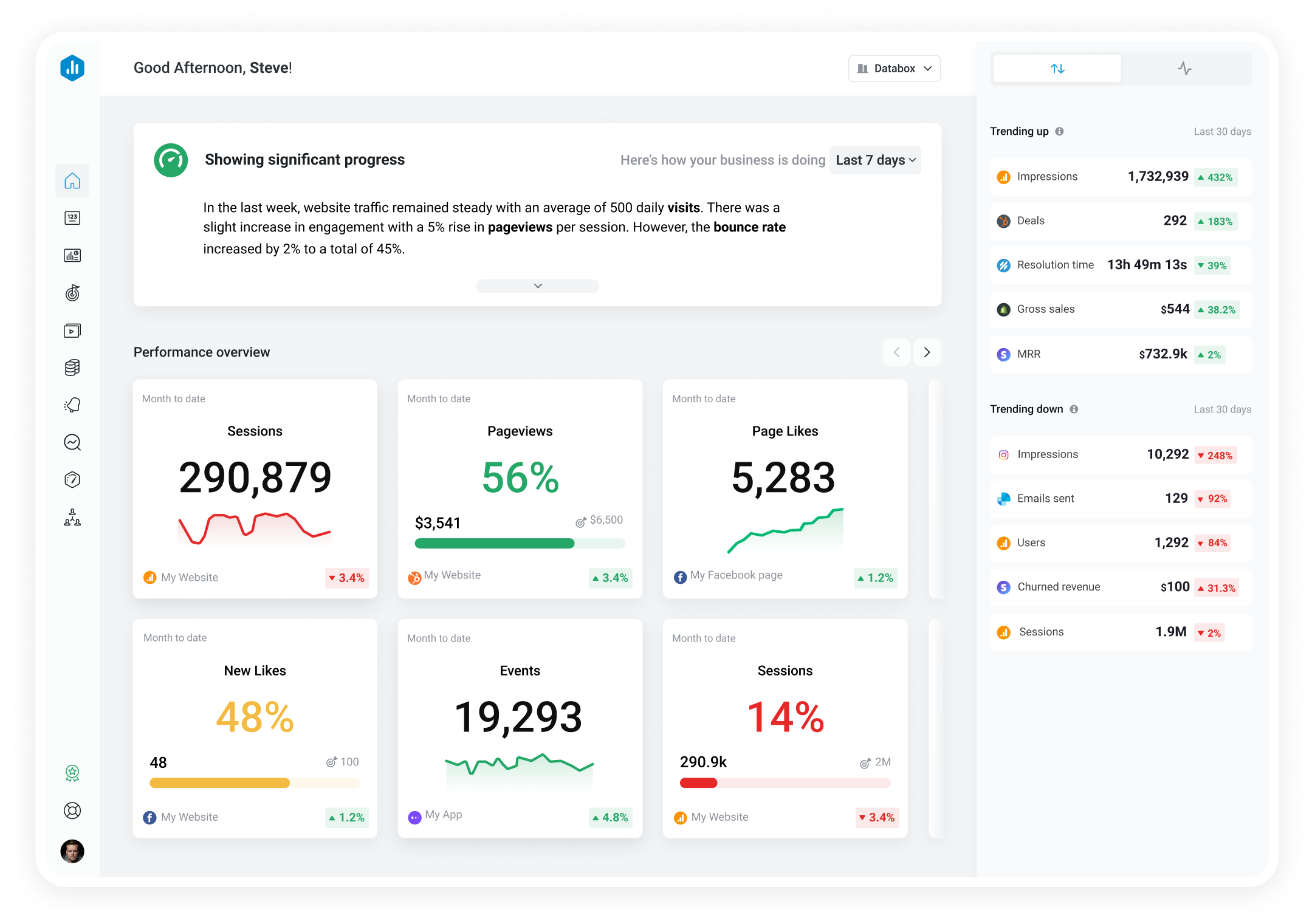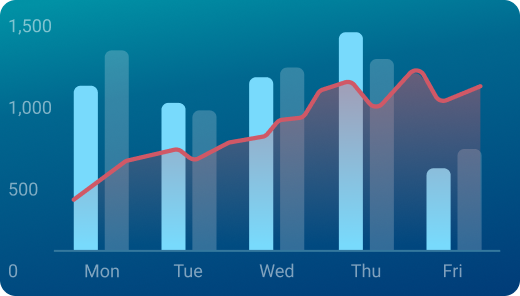Track all of your key business metrics from one screen
GET STARTED
 LinkedIn Ads
Average CPM by Campaign
LinkedIn Ads
Average CPM by Campaign The Average CPM by Campaign metric in LinkedIn Ads reflects the average cost of 1,000 ad impressions for a specific campaign, allowing advertisers to evaluate the cost-effectiveness of their campaigns.
With Databox you can track all your metrics from various data sources in one place.

Used to show comparisons between values.
Databox is a business analytics software that allows you to track and visualize your most important metrics from any data source in one centralized platform.
To track Average CPM by Campaign using Databox, follow these steps:
 Goals
Goals Scorecards
Scorecards Metric Digest
Metric Digest Metric Builder
Metric Builder Data Calculations
Data Calculations Performance Screen
Performance ScreenThis dashboard shows a high-level overview of your Linkedin Ads Campaign performance so you can track ROI.

Use this LinkedIn Ads advanced report to share high-level and in-depth metrics of your LinkedIn Ad performance. Present key insights like conversions, clicks, CPC, and more.

